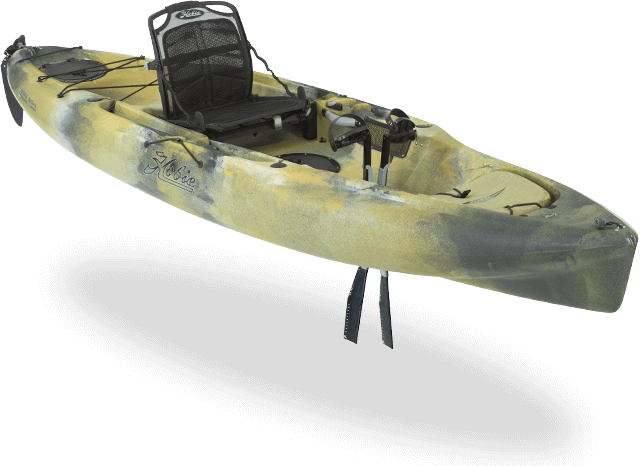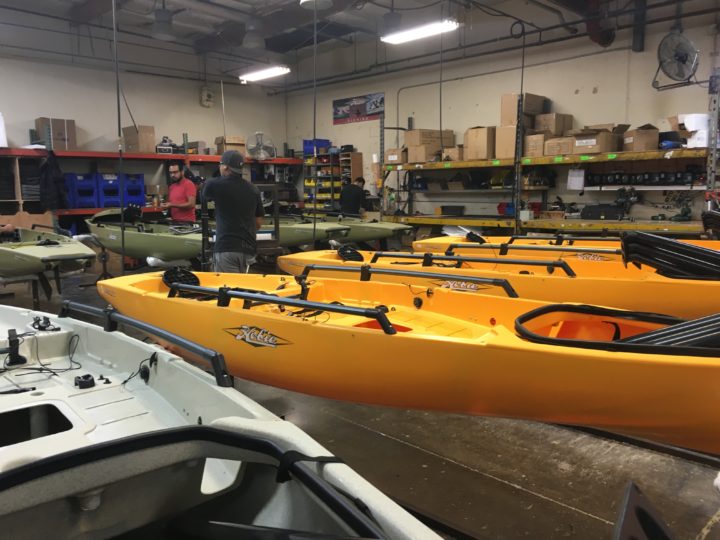When you’re looking for a new kayak, you will inevitably see a slough of names of plastics and manufacturing techniques. It’s easy to get lost in the terminology. Let’s break it down quickly.
There are three basic types of kayaks: fiberglass, or plastics made with a rotomolded or thermoformed technique. Many racing and ocean kayaks are made of fiberglass, but as you move into recreational and fishing kayaks you will begin to primarily see the other two types. All of our kayaks are either rotomolded or thermoformed.
Rotomolded
Hobie and Native Watercraft kayaks are rotomolded plastic kayaks. These kayaks start with powdered polyethylene plastic and a mold. First, any graphics are placed directly on the mold. Secondly, the plastic powder is laid by hand into a female mold. Because the plastics are laid by hand, the multicolored patterns you see in the new camo Hobie or in the Native kayaks are unique to that boat. The mold is the clamped shut and the whole mold is moved into an oven. The mold is consistently moved, rotated, rocked, and agitated to ensure even distribution of the plastic. After 30 minutes or so, the kayak is moved out of the oven and allowed to cool. All the fittings, hatches, etc. are now added and the kayak moves on to quality control where it is tested to ensure that it lives up to the standard you expect.

A rotomolded Hobie Mirage Outback in Camo color.
Thermoformed
Thermoformed kayaks start with a sheet of plastic. This plastic sheet is generally made up of several types of plastics compressed into one sheet. For most producers, the outside layer is an acrylic plastic of some kind. This layer is meant to protect the kayak from harmful UV rays as well as create a glossy finish and attractive color. The inner layer that forms the kayak is an high impact ABS plastic. This gives the kayak rigidity and allows it to take a beating on the water.
The sheet of plastic is heated in an oven, and moved on top of a male mold that’s already been stickered and branded. A vacuum is then applied and the sheet forms to the mold. This is allowed to cool, and then the excess plastic is cut off and recycled into a new sheet. The top and bottom of the kayak are then joined together, and the fittings, hatches, etc. are added.

A thermoformed Hurricane Santee 120 Sport.
With proper care, both kayaks will last for years. So what is the advantage of each method?
Rotomolded kayaks tend to be heavier, however they take a beating much better than a thermoformed kayak. Rotomolded kayaks also do not have a built in protection against UV rays. You’ll find that most fishing boats are made out of rotomolded plastic.
Thermoformed kayaks are much lighter weight. They also aren’t as durable as rotomolded kayaks. For many recreational kayakers in the Puget Sound, thermoformed is a great fit. It is lightweight and sharp rocks and debris aren’t as much as a problem as they are for people using the boats on rivers or sharp, rocky shores. Thermoformed is a great fit for recreational kayakers coming from fiberglass and wanting a lightweight option at a competitive price point.
We stock kayaks made from both rotomolded or thermoformed ABS. We’d love to show you the difference in person. Come by to see for yourself.





